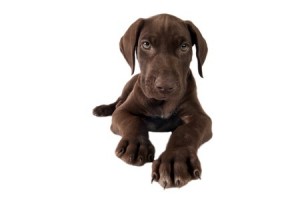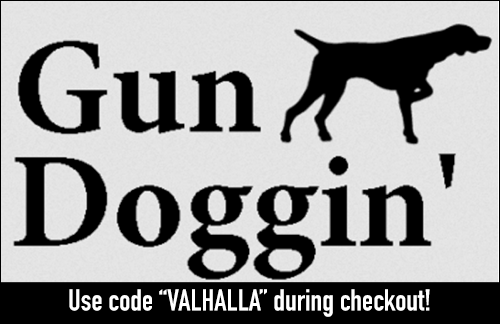Bird Dog Training: How to Pick a Puppy
 Choosing the right puppy to train into a bird dog can be tricky business. Imagine looking at young child and trying to determine which natural gifts they will grow into. It’s difficult to make choices when the consequences are so far into the future, and when so much commitment is required to bring the most out of the puppy you eventually choose.
Choosing the right puppy to train into a bird dog can be tricky business. Imagine looking at young child and trying to determine which natural gifts they will grow into. It’s difficult to make choices when the consequences are so far into the future, and when so much commitment is required to bring the most out of the puppy you eventually choose.
It’s tough to decide, and it should be. But there are plenty of key signs that can make you confident you’re choosing the right hunting partner for your future.
First, remember that every breed is different, with their own advantages and disadvantages. Some are better than others are with different climates, terrains, and hunting prey. Do some research and talk with experts about which breed might be best for you, while maintaining an open mind about factors you might not have considered thus far.
Once you’ve decided on a breed you like, and you’re visiting a breeder, surveying available puppies, use indications of health to narrow your search down to some reliable choices. Make sure you have verifiable proof of veterinarian examinations and shots administered. Use your own judgment to determine whether a puppy looks vibrant and healthy, and avoid those that look sickly and skinny. A dog’s fully-grown size can be estimated fairly well at an early age.
Perhaps the most important factor in determining a good puppy to use as a bird dog, and the most reliable, is a record of the puppy’s pedigree. If their parents are good bird dogs, this is a huge indicator that you have a winner on your hands. If you can witness the parents in action yourself, that’s great. But referrals or videos of work in the field are nice as well. As with any animal, a puppy’s genetics play a huge role in their development, from sense of smell to the way they behave in different situations.
Speaking of behavior, it never hurts to interact with a puppy you’re interested in to get a sense of what their future could hold. Play around with your puppy, making sure they’re not too testy or too calm. However, don’t put too much stock into how they act as puppies, as they still have a great deal of growing and training ahead of them. The best candidates are those that have a history of being handled by people.
Once you’ve narrowed your search down to a select few, and you can’t seem to find any quantifiable differences between them, trust your instinct to make the final choice. Settle on the puppy with which you feel the strongest underlying connection. After all, you’ll be spending a great deal of time with your new friend.
Valhalla Gun Dogs & Trainers has been a premier Colorado upland bird hunting club since 1989 and a kennel since 1998. Visit our website or give us a call today if you’re interested in expert, year-round training for both you and your canine hunting partner.
Range
I’m addressing a question I get asked on a daily basis by clients, “How far should I let my dog range”. This is a reasonable question. First I’ll define range. This is the distance that your dog hunts in front of you. Let’s not over complicate this simple idea. I could break this down to breed specifics, talk about pointers vs. flushers, scenting conditions, wind directions, cover density, ect. For the sake of discussion I’m going to keep this as basic as possible.
I put a great deal of time into training a gun dog. I start each pup in a specific manner and methodically move them through the training process, with the ultimate goal being a finished gun dog. That being said, how far should we let them range? Simple, if I’m hunting and my dog is flushing birds out of gun range, the dog is too far out in front of me. If I’m hunting and the dog is pointing at greater distances, let’s say 200 yard out, sticking birds, holding them rock steady until the flush and shot, and making flawless retrieves, then that is a range the dog is capable of handling.
I think a better question to ask is “how do I control my dog’s range”? Whether you have a 40 yard bootlicker or a 200 yard rocket you still need to maintain control and adapt to conditions. I preach to my clients, that many people have sporting breeds but very few have hunting dogs and the difference is how the puppy is started from day one. So let’s remember the basics. We start off with every pup dragging a check cord. We do this for a reason. Yard work is the foundation for every future gun dog.
If we do not lay the foundation, range will be just one of the many problems you have with your dog. Maybe you need to go back to quartering drills to bring them into check. Maybe some reinforcement with the whoa command or sit to the whistle. All the simple drills we spent endless hours training before we transitioned the dog to the electronic collar need to be revisited. Remember guys, we should be able to drive our dogs through the field like high dollar sports cars. When a command is given we require an immediate response from our dogs or they are instantly corrected. So my general rule is I give my dogs enough rope to hang themselves. If they are doing great and sticking points I let them range. If they need to be brought in a bit we go back to our quartering and whoa work and the basic foundation we laid in the beginning.
Welcome to our new Blog
Stay tuned for frequent posts.

